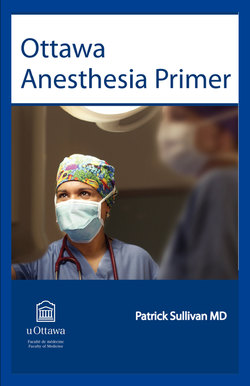Читать книгу Ottawa Anesthesia Primer - Patrick Sullivan - Страница 30
На сайте Литреса книга снята с продажи.
ОглавлениеFig. 3.1 Cardiac evaluation and care algorithm for non cardiac surgery based on active clinical conditions, known cardiovascular disease, or cardiac risk factors for patients 50 years of age or greater. Clinical risk factors* include ischemic heart disease, compensated or prior heart failure, diabetes mellitus, renal insufficiency and cerebrovascular disease. Consider perioperative beta blockade for populations in which this has been shown to reduce cardiac morbidity/mortality. ACC/AHA indicates American College of Cardiology / American Heart Association. HR = heart rate; LOE = level of evidence; MET = metabolic equivalent. Adapted from the ACC/AHA.
Summative Risk and The Risk of Anesthesia:
Understanding the extent of a patient’s disease is of paramount importance as many organ systems are directly affected by the delivery of anesthesia. Evaluation of a patient’s overall perioperative risk must consider the patient’s preoperative medical condition, the nature of the proposed surgical procedure, and the risks associated with anesthesia. Fortunately, anesthesia-related morbidity and mortality are rare.
It is difficult to make generalized statements about risk due to the wide variety of surgical procedures and anesthetic techniques combined with the diversity of a patient’s comorbid conditions. It is rare for patients to receive an anesthetic without undergoing a surgical procedure, which makes it a challenge to separate the relative contributions of anesthesia and surgery from the adverse outcomes. Generalized estimates of all-cause perioperative morbidity of 1:500 and anesthesia-related mortality of 1:13,000 have been relatively consistent over the past forty years.35
The question that needs to be answered is “What is the risk of this particular procedure in this particular patient who has these medical conditions and is receiving this specific anesthetic technique?” Numerous investigators have attempted to address this very complex question. Most of the work, however, addresses the operative risk according to the patient’s preoperative medical status.
Perioperative Risk Assessment:
Perhaps the oldest and simplest method of risk assessment is the American Society of Anesthesiologists (ASA) physical status classification system (Table 3.7).
ASA Physical Status Classification:
The ASA physical status classification originally proposed in 1941 and revised by Dripps in 196136 provides a simple clinical assessment of a patient’s preoperative physical condition. While initially developed as a tool for classifying a patient’s physical condition, the ASA physical status has also been used to stratify patient risk. While open to significant criticism because of its vague categories and inconsistencies in its application, the ASA physical status classification has been shown to correlate with perioperative mortality.35
